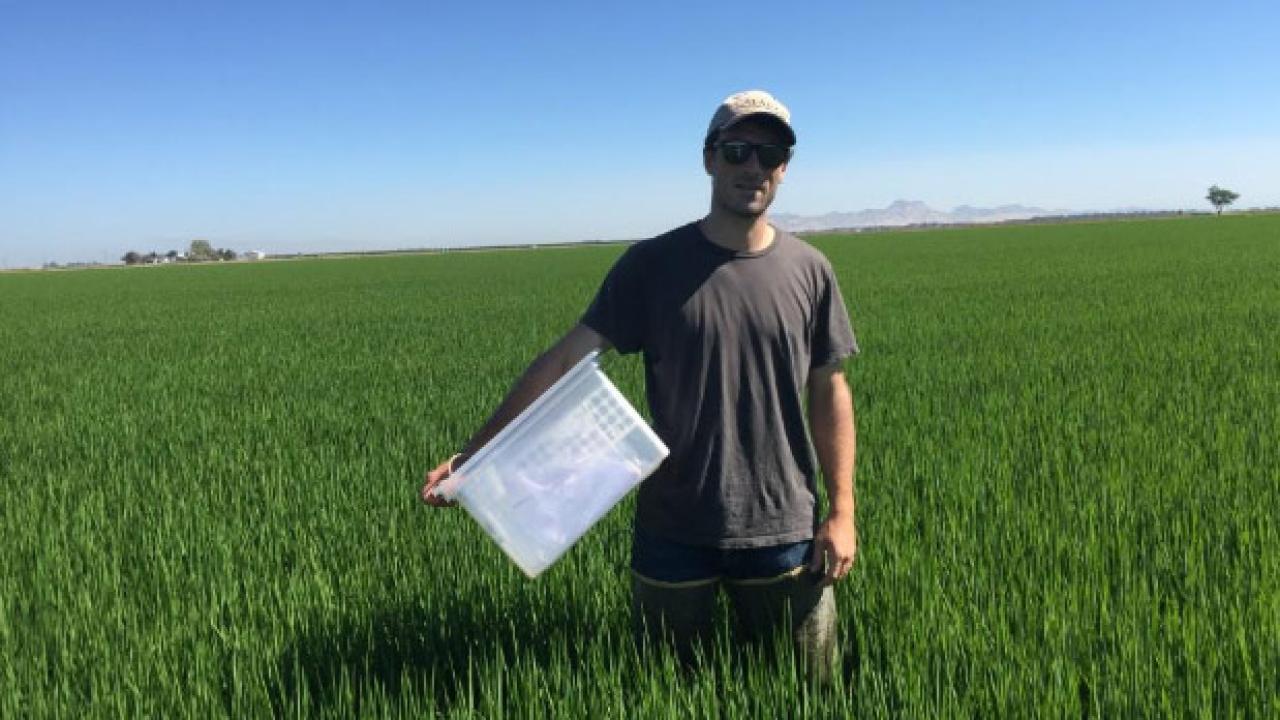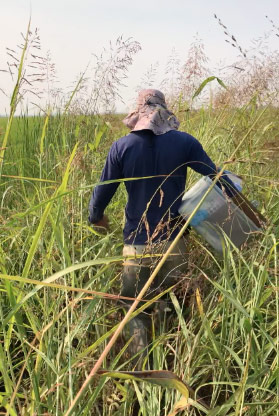
Methylmercury Dynamics in Agricultural Wetlands in The Sacramento Valley, California
Luke Salvato
2019 Jastro Report
February 1, 2019
Methylmercury (MeHg) is a pollutant known to cause neurological problems and reduced reproductive success in organisms in mercury contaminated ecosystems. In California, there is a high concentration of environmental mercury to due legacy mercury and gold mining. In anoxic soils typical of flooded, wetland environments, inorganic mercury can be methylated by sulfate and iron reducing bacteria. Rice in California is grown in flooded, agricultural wetlands that are known to stimulate the production of sulfate and iron reducing bacteria. Management regimes typical of fields producing white rice, such as high inputs of organic carbon, manipulated periods of flooding and drying, and shallow, slow moving overlying water, are known to increase mercury methylation rates. Furthermore, in California there is approximately 2.5 times the amount of land area in rice agriculture than in native wetland ecosystems.
The overall objective of this research project was to determine if methylmercury discharged from rice systems poses a health risk to humans and wildlife fish consumers and, if so, how we can cost effectively minimize the risk. The specific objectives of the study were to quantify MeHg in filtered and particulate samples from inlets, outlets, and in field water samples, determine the relative rates of mercury methylation in both winter and summer rice wetlands, and to determine what may be driving mercury methylation and accumulation in CA rice wetland ecosystems. This study was conducted within the Agroecosystems Lab at the UC Davis department of Plant Sciences. Dr. Bruce Linquist is the principle investigator. Jastro funding was used to purchase field sampling equipment and for travel funds to present this research at the 2019 Soil Science Society of America (SSSA) conference in San Diego, California.
Six commercial rice fields were monitored for the 2017-18 fallow and for the 2018 growing season. These fields were agroecologically representative of major rice growing areas within California. The fields were selected in pairs by region, where one field in each pair received fresh irrigation water and the other received recycled ag-drain water. The fields were otherwise under similar management regimes. It was hypothesized that the use of recycled water increases infield MeHg concentrations. Water from the inlet, field, and outlet, as well as sediment and grain from each field were sampled throughout the study period. Hydrologic equipment was used to determine water flow rates and volumes in order to determine seasonal and annual MeHg budgets for each field.
Data from this study is still preliminary but will be finalized by April 2019. Data analysis to date has focused on filtered samples, the dissolved form off mercury is more bioavailable and more likely to bioaccumulate in the downstream ecosystem than particulate mercury. Preliminary data show that filtered inlet water MeHg concentrations were lowest in the winter, relatively low in the spring, and tended to increase throughout the summer. There was no significant difference in filtered inlet water MeHg concentrations between fields that received fresh water and fields that received recycled water. Outlet water MeHg concentrations were highest in the winter and lowest in the late summer (pre-harvest), and there was little difference between recycled and fresh fields during these times. MeHg concentrations were somewhat elevated during the summer maintenance drains, and during this time recycled fields had significantly higher outlet MeHg concentrations than did recycled fields.
As for mercury budgets, all six fields were MeHg sources in the fallow season, and net sinks in the growing season. Across all fields, filtered outlet water concentrations were about 3-8 times higher in the fallow season than in the growing season. There was significant accumulation of winter rainfall in the fields and relatively low rates of evapotranspiration in the winter resulting in larger volumes of water exported as drainage water during the fallow (40-60% of applied irrigation water) compared to the growing season. Because there were significantly larger volumes of water exported as drainage water during the fallow, the fields acted as net MeHg exporters. In the growing season, outlet MeHg concentrations were relatively low and only 13-25% of irrigation water applied was exported as drainage water, causing the fields to act as net sinks of MeHg. On an annual basis, fresh fields were net sinks of MeHg while fields receiving recycled water were net sources of MeHg, although the magnitude of export and import can vary greatly regardless of irrigation time.


